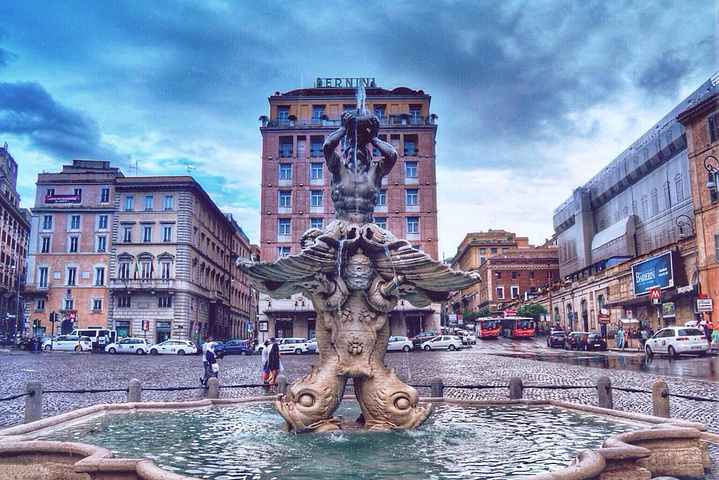Exploring the Majestic Fountain of Neptune: A Symbol of Power and Beauty
Introduction:
Nestled amidst the historic cityscape of Florence, Italy, stands a magnificent monument that has captured the imagination of visitors for centuries – the Fountain of Neptune. This grandiose fountain, dedicated to the Roman god of the sea, embodies the essence of power, beauty, and artistic mastery. In this blog, we embark on a journey to unravel the history and significance of the Fountain of Neptune, an iconic symbol of Florentine heritage.

A Marvel of Renaissance Artistry:
Commissioned by the ruling Medici family in the 16th century, the Fountain of Neptune is a masterpiece of Renaissance sculpture and engineering. Designed by the renowned artist Bartolomeo Ammannati, the fountain was intended to glorify the Medici dynasty and showcase their wealth and influence.
The central figure of the fountain is Neptune, the god of the sea, depicted in all his majestic splendor. Towering over the surrounding square, Neptune is portrayed wielding a trident and commanding the waters with a commanding presence. The sculptural details, from the intricate musculature of Neptune’s body to the swirling waves at his feet, reflect the meticulous craftsmanship of the Renaissance masters.
A Triumph of Hydraulic Engineering:
Beyond its artistic grandeur, the Fountain of Neptune is also a testament to the ingenuity of Renaissance hydraulic engineering. The fountain’s cascading waters are fed by an intricate network of aqueducts and pipes, ingeniously designed to channel water from the nearby Arno River.
The engineering feat behind the Fountain of Neptune not only ensured a steady supply of water to the fountain but also facilitated the creation of dynamic water features, such as the gushing jets and cascading streams that animate the sculpture of Neptune.
A Symbol of Civic Pride and Identity:
As the centerpiece of the Piazza della Signoria, the Fountain of Neptune holds a central place in the civic life of Florence. Over the centuries, it has served as a gathering point for citizens, a backdrop for public ceremonies, and a symbol of Florentine pride and identity.
The Fountain of Neptune also embodies the spirit of humanism and cultural renewal that characterized the Renaissance era. By celebrating the mythological figure of Neptune, the fountain pays homage to Florence’s maritime heritage and its enduring connection to the sea.
Preserving a Cultural Treasure:
Despite the passage of time and the challenges of preservation, the Fountain of Neptune continues to stand as a testament to Florence’s rich cultural heritage. Over the years, efforts have been made to restore and maintain the fountain, ensuring that future generations can continue to marvel at its beauty and significance.

Conclusion:
The Fountain of Neptune stands as a timeless symbol of power, beauty, and artistic excellence. From its imposing sculpture of the sea god Neptune to its intricate hydraulic system, the fountain is a marvel of Renaissance artistry and engineering. As we gaze upon its majestic form, we are reminded of the enduring legacy of Florence and the indelible mark of human creativity on the world.
